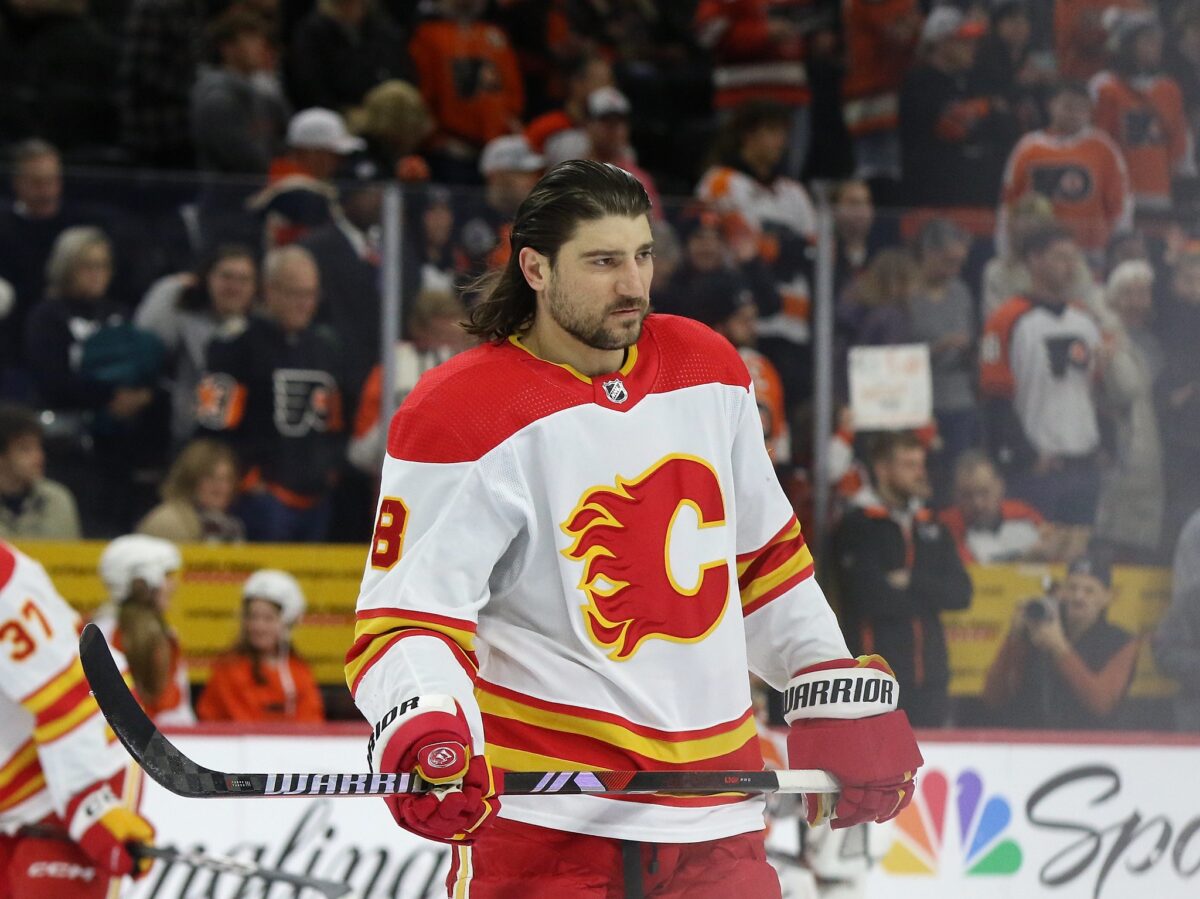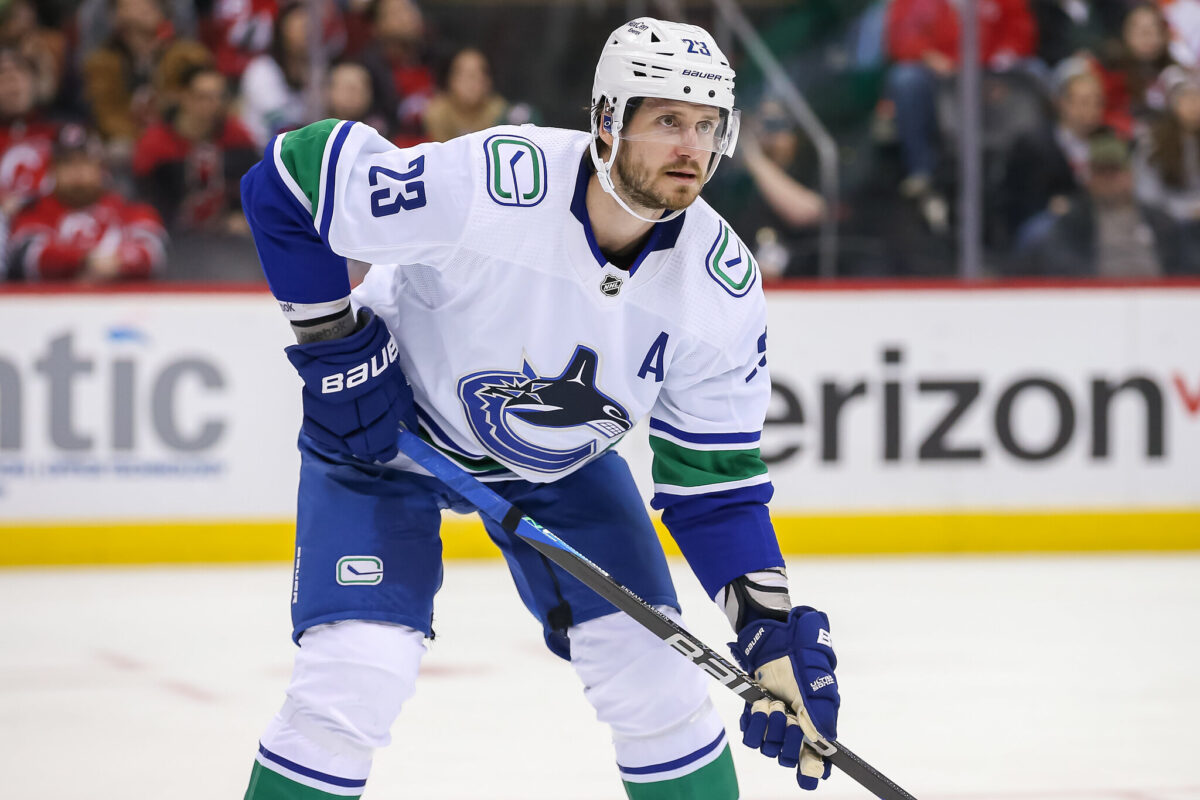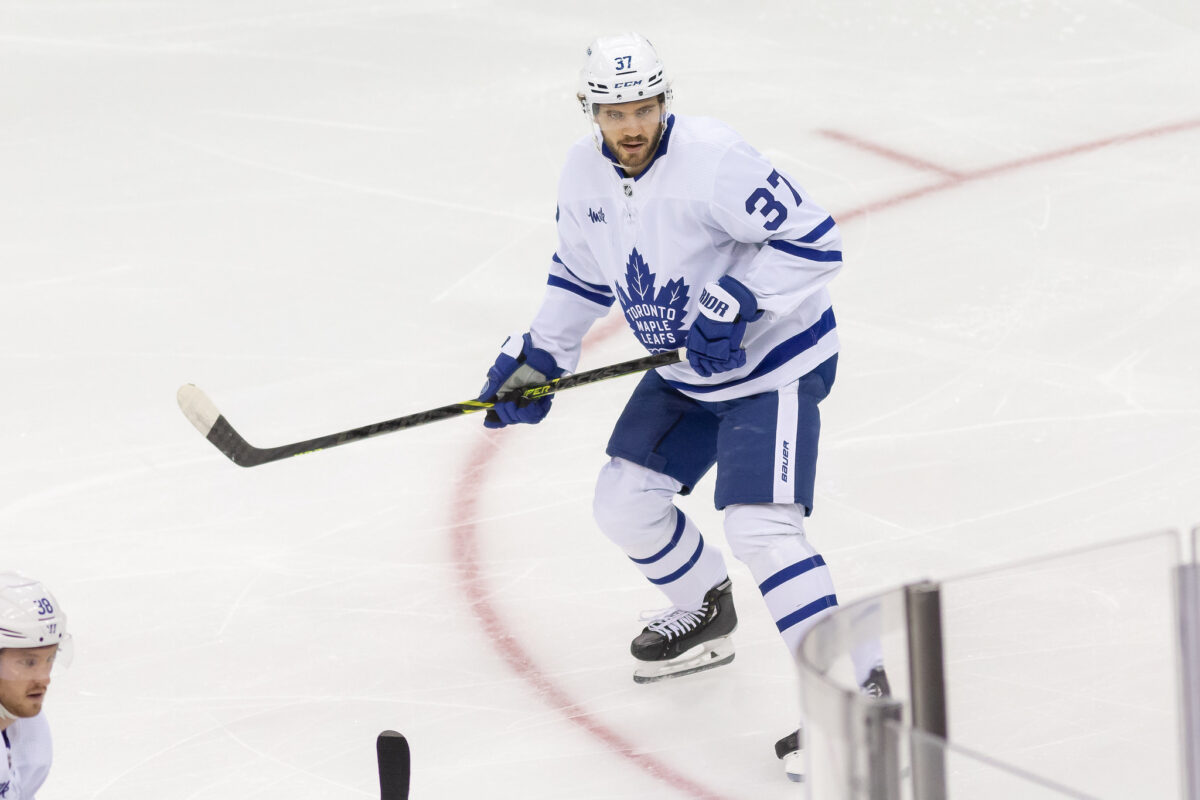With the Toronto Maple Leafs gearing up for training camp next week, it’s the perfect time to dive into our thoughts on the team’s regular-season lineup. In this comprehensive review, I’m teaming up with my regular writing partner, Stan Smith, to analyze the Maple Leafs’ roster from top to bottom.
We’ve broken down our review into three detailed sections. On Saturday (Sept. 7), we focused on the top six forwards. On Sunday (Sept. 8), in our second post, we assessed the bottom six forwards, looking at their roles and the potential impact they could have on the team’s overall performance. Finally, today, we’ll shift our attention to the Maple Leafs’ defence, evaluating its strengths, potential pairings, and the contributions it could make to the team’s success.
Related: 3 Reasons for Maple Leafs Optimism in 2024-25
Together, Stan and I will explore what this Maple Leafs team might look like as the regular season approaches.
The Maple Leafs’ Top Defensive Pairing: Morgan Rielly & Chris Tanev
Morgan Rielly is the Maple Leafs’ number-one offensive defenceman. He scored in the top ten for defencemen over the last ten years. Last season, he was 11th in scoring by a defenceman. There is no competition on the Maple Leafs regarding the number one defenceman on the left side. It is Rielly.
Chris Tanev was signed as the number one right-side defenceman on the Maple Leafs. At the age of 34, it is questionable how long he can hold on to that. But for now, this was why he was acquired. The strength of his game is his defensive play. His job will be to take care of the defensive end to allow Rielly to play to his offensive strengths. While it is still to be proven, he could be the best partner Rielly has ever had.

There is no doubt right now that this is the Maple Leafs’ number-one pair on defence.
The Maple Leafs’ Second Defensive Pairing: Jake McCabe & Oliver Ekman-Larsson, Timothy Liljegren, or Simon Benoit
We know this is a cop-out. At this point, we are sure of one thing and one thing only: Jake McCabe will be on the second pair. He is number three on the depth chart for the Maple Leafs. He was third in ice time for the defence last season (second in the playoffs), and he will be third in usage this season behind Rielly and Tanev. With McCabe being four years younger than Tanev, he might even threaten Tanev for second in ice time. It just won’t be playing alongside Rielly much. There is also the fact that McCabe can play either side equally well, which plays in his and the Maple Leafs’ favour.
Related: NHL Rumors: Oilers, Leafs, Flames, Sabres, Canucks, Bruin
Ideally, we can see the Maple Leafs starting each game with McCabe and Oliver Ekman-Larsson together. Ekman-Larsson (or OEL as he is commonly known) was one of the NHL’s best defencemen in his prime, garnering votes for the Norris Trophy in four straight seasons from 2012 to 2016. He was able to sign an eight-year deal for $8.25 million back in 2019. Unfortunately, OEL’s play slipped as he entered his 30s to the point where the Vancouver Canucks bit the bullet and bought him out at the start of the 2023-24 season. The Florida Panthers subsequently signed OEL to a one-year, $2.25 million deal, and he played a role in the Panthers’ Stanley Cup win last season, averaging 15 ½ minutes per game on the third pair.
Similarly to Rielly in his prime, OEL was known more for his offence than his defence. He had two 20-goal seasons and averaged about 50 points in his mid-20s. His defence was adequate and probably a little better than Rielly’s, but his play with the puck was his bread and butter. While OEL has had to relearn how to play now that he is 33, his strength remains in his play with the puck.

That is why McCabe is a good partner for OEL. He can do for OEL what Tanev is expected to do for Rielly, giving that pair offensive and defensive balance.
If, for whatever reason, OEL struggles, Liljegren could move a step up onto the second pair, with McCabe still giving that pair some balance. While Liljegren does not have the pedigree that OEL has, he has youth at 25 years old and a strong game with the puck. Liljegren might be better defensively than OEL at this point in their respective careers, but his Achilles heel seems to be a mental error, sometimes at the worst times. Like Rielly and OEL, Liljegren also benefits from playing with a strong defensive partner like McCabe.
Related: What Can Maple Leafs Fans Expect From Nikita Grebenkin?
If the Maple Leafs need a shutdown pair for game situations, the ideal pair might be McCabe and Simon Benoit. Even though McCabe did show some offensive flare last season, Benoit and McCabe have similar strengths. They both play a tough, physical, in-your-face style of game. They combined for over 550 hits in the regular season and playoffs last season. With OEL or Liljegren, McCabe would play on his wrong or right side, whatever you want to call it. He would move over to his proper or left side when paired with Benoit.
The Maple Leafs’ Second Defensive Pairing: Third Pair (or Second “B” Pair) Simon Benoit – Timothy Liljegren
If McCabe and OEL make up the second pair to start games, Benoit and Liljegren will be left for the third pair, or what we would call the second “B” pair. This would give the Maple Leafs balance on all three pairs. A strong player with the puck, in Liljegren, and a strong player without the puck in Benoit. As mentioned above, McCabe and Benoit could team up in defensive situations. On the other hand, if the Maple Leafs were behind and needed more offence, Liljegren and OEL could pair up, giving the team two strong players with the puck.

We refer to the bottom two pairs as second “A” and “B” because all four players can play top-four minutes. The defenceman’s usage isn’t as cut and dry as the forwards’. We could see a lot of mixing up on the bottom two pairs, especially early in the season.
The Bottom Line for the Maple Leafs Defence
In conclusion, the Maple Leafs’ defence heading into the season offers great flexibility, particularly after solidifying the top pairing. The team appears to have more offensive firepower from the back end than in previous seasons, combined with a stronger overall defensive presence.
One lingering question is what the team plans to do with Conor Timmons. Despite being somewhat overlooked, he has shown promise every time he’s been given ice time. Defensively, he holds his own, and offensively, he shines with a quick breakout pass and the ability to create scoring opportunities, often racking up assists. The rumours of him being moved to clear space for other signings, such as Max Pacioretty, seem shortsighted, given his potential value.
Related: Jake McCabe’s Return Is Crucial to the Maple Leafs Defense
What is certain, though, is that the Maple Leafs will need depth on defence, as injuries are an inevitable part of the season. Historically, the team has had to rely on American Hockey League (AHL) Toronto Marlies call-ups to plug holes on the blue line, which will likely happen again this season. Depth and flexibility will be essential as the team works through the long grind of the regular season.
[Note: I want to thank long-time Maple Leafs fan Stan Smith for collaborating with me on this post. Stan’s Facebook profile can be found here.]
